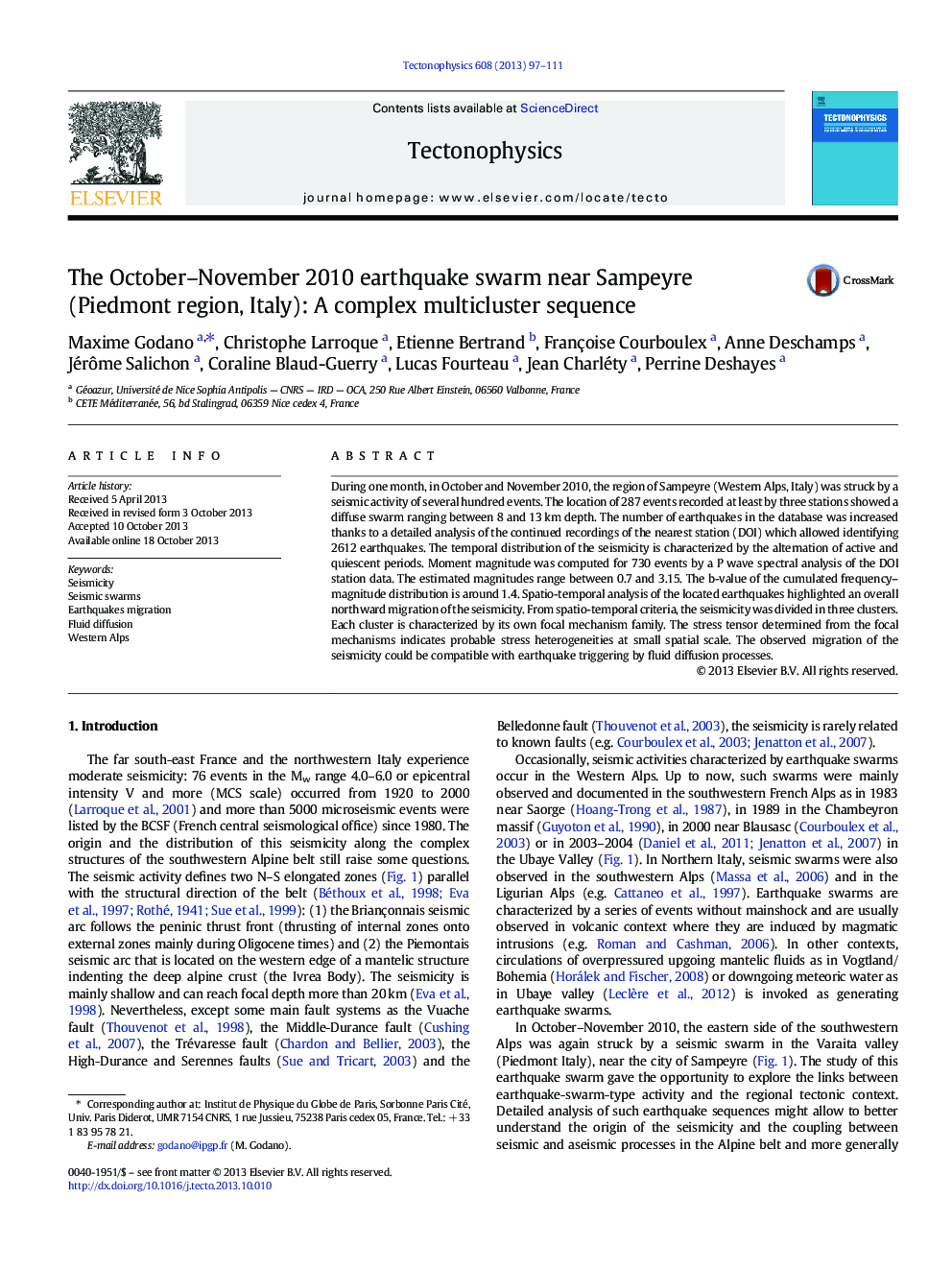| Article ID | Journal | Published Year | Pages | File Type |
|---|---|---|---|---|
| 6433925 | Tectonophysics | 2013 | 15 Pages |
â¢We study a seismic swarm in the Western Italian Alps.â¢Detection of 2612 earthquakes during one month on the nearest station recordingsâ¢Relocation of the seismicity using double-difference methodâ¢Swarm located at the top of the Ivrea Bodyâ¢Migration of the seismicity in accordance with fluid diffusion process
During one month, in October and November 2010, the region of Sampeyre (Western Alps, Italy) was struck by a seismic activity of several hundred events. The location of 287 events recorded at least by three stations showed a diffuse swarm ranging between 8 and 13Â km depth. The number of earthquakes in the database was increased thanks to a detailed analysis of the continued recordings of the nearest station (DOI) which allowed identifying 2612 earthquakes. The temporal distribution of the seismicity is characterized by the alternation of active and quiescent periods. Moment magnitude was computed for 730 events by a P wave spectral analysis of the DOI station data. The estimated magnitudes range between 0.7 and 3.15. The b-value of the cumulated frequency-magnitude distribution is around 1.4. Spatio-temporal analysis of the located earthquakes highlighted an overall northward migration of the seismicity. From spatio-temporal criteria, the seismicity was divided in three clusters. Each cluster is characterized by its own focal mechanism family. The stress tensor determined from the focal mechanisms indicates probable stress heterogeneities at small spatial scale. The observed migration of the seismicity could be compatible with earthquake triggering by fluid diffusion processes.
